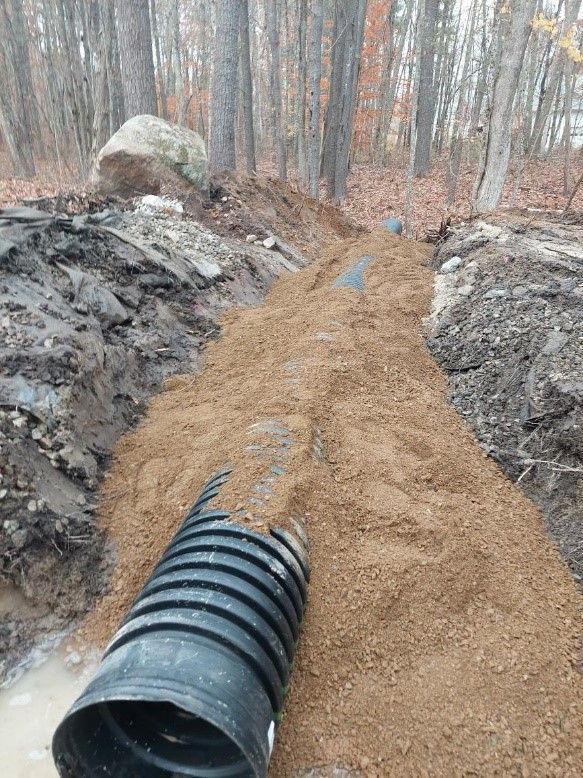Comprehensive Culvert Installation for Reliable Water Drainage
Comprehensive Culvert Installation for Reliable Water Drainage
Blog Article
Mastering Culvert Setup: Increase Your Land Water Drainage Efforts
From picking the best products to carrying out best practices, understanding culvert installation can dramatically boost the performance and long life of your land water drainage system. By understanding the intricacies of culvert installation, you can optimize your drainage initiatives and ensure lasting land use methods.
Importance of Culvert Setup
Making sure appropriate culvert setup is vital for preserving effective land drainage systems. Appropriate installation of culverts assists to funnel water away from roadways and buildings, decreasing the danger of flooding and water damage.
Proper Sizing and Positioning

Proper positioning of culverts is equally important. Culverts should be positioned at the cheapest point of the area calling for drainage to make sure effective water flow.
Material Option Tips
Choosing the right products is critical in making certain the toughness and performance of culverts for reliable land water drainage systems. When choosing materials for culvert setup, it is essential to consider variables such as the water circulation price, dirt structure, and ecological problems of the website.
One of the most typical products utilized for culverts is corrugated metal. Concrete culverts are excellent for areas prone to corrosion or when a much longer service life is wanted.
For ecologically delicate areas, plastic culverts may be preferred. Plastic culverts are lightweight, resistant to deterioration, and easy to transfer and mount. They are additionally understood for their smooth inside, which assists to keep efficient water circulation. Furthermore, in locations where natural looks are vital, click to read materials like rock or timber can be utilized to build culverts that mix seamlessly right into the surroundings. Ultimately, the choice of product must be based upon a detailed assessment of the particular requirements and problems of the land drainage task.
Setup Techniques and Best Practices
Offered the critical value of material option in ensuring the capability and durability of culverts, the setup methods and best practices play a critical role in the general success of land drain systems. Appropriate installation is vital to avoid concerns such as leakages, collapses, or clogs that can endanger i was reading this the effectiveness of the culvert.

Throughout installation, care needs to be taken to straighten the culvert correctly and offer appropriate assistance to stop deformation. Backfilling ought to be done slowly and compressed in layers to stay clear of gaps and negotiation. Correct compaction is necessary to visit homepage protect against changing or sinking of the culvert over time.

Maintenance and Long-Term Treatment
Carrying out an extensive maintenance plan is necessary for guaranteeing the durability and reliable performance of culverts in land drainage systems. Clearing up debris such as fallen leaves, branches, and sediment is essential to protect against obstructing and keep the flow ability of the culvert.
Regular maintenance tasks may include cleaning, fixing joints, reinforcing inlet and electrical outlet structures, and guaranteeing appropriate slope and positioning of the culvert. Keeping comprehensive documents of maintenance tasks, evaluations, and repair work is important for tracking the problem of the culvert over time and intending future upkeep needs.
Final Thought
To conclude, mastering culvert installment is critical for effective land drainage. Proper sizing, placement, product selection, installment methods, and upkeep are vital aspects to think about. By complying with finest techniques and executing long-lasting treatment methods, landowners can improve their drain initiatives and ensure the long life and capability of their culverts. It is necessary to focus on these facets to prevent water damages, disintegration, and other costly concerns on the residential property.
Report this page